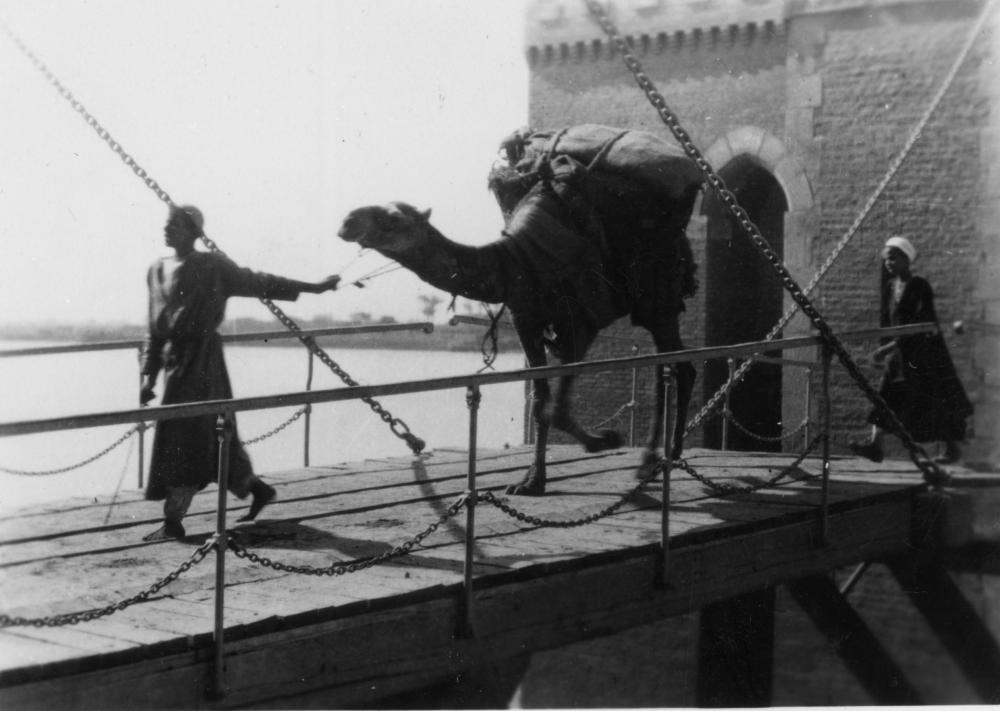7th July – Researching the El Gala’a Bridge in Cairo for a ‘Night’ photo challenge, I discovered it opened for feluccas by pivoting the central part around to perpendicular, making two passageways for the boats.
The first photo below is my father’s (that is, it was in his album but possibly not taken by him) which seems to have been shot from an identical position as the ‘Night’ photo. Following this are two photos (undated but taken during WWII) in the National Library of Australia collection, by war photographer Frank Hurley, of the bridge opened for felucca traffic. When closed, the bridge seems to have been only for pedestrians in those days. I searched for recent images of the El Gala’a Bridge and found that it now carries heavy vehicular traffic, and during last year’s revolution was jam-packed with Egyptians heading for Tahrir Square.

8th July – Bought a green leather bag which was half-price ‘because of the colour’.
9th July – Spent hours searching the Internet for an image matching my camel bridge photo. Finally found a postcard from the early 20th century showing the same bridge. The Internet is an amazing resource!
10th July – Tried to get out of a 3-hour free carpark. Put the ticket in the machine and it shot out and landed in a puddle where 6 other tickets were being rained on. Mine was the driest, so I picked it up and put it back in. It shot out again. I hit the red ‘Help’ button and a muffled voice announced the free parking had been reduced to 2 hours. The boom was generously raised anyway.
11th July – Learned that Joni Mitchell’s song ‘Both sides now’ was written as a poem. It’s great read aloud.









